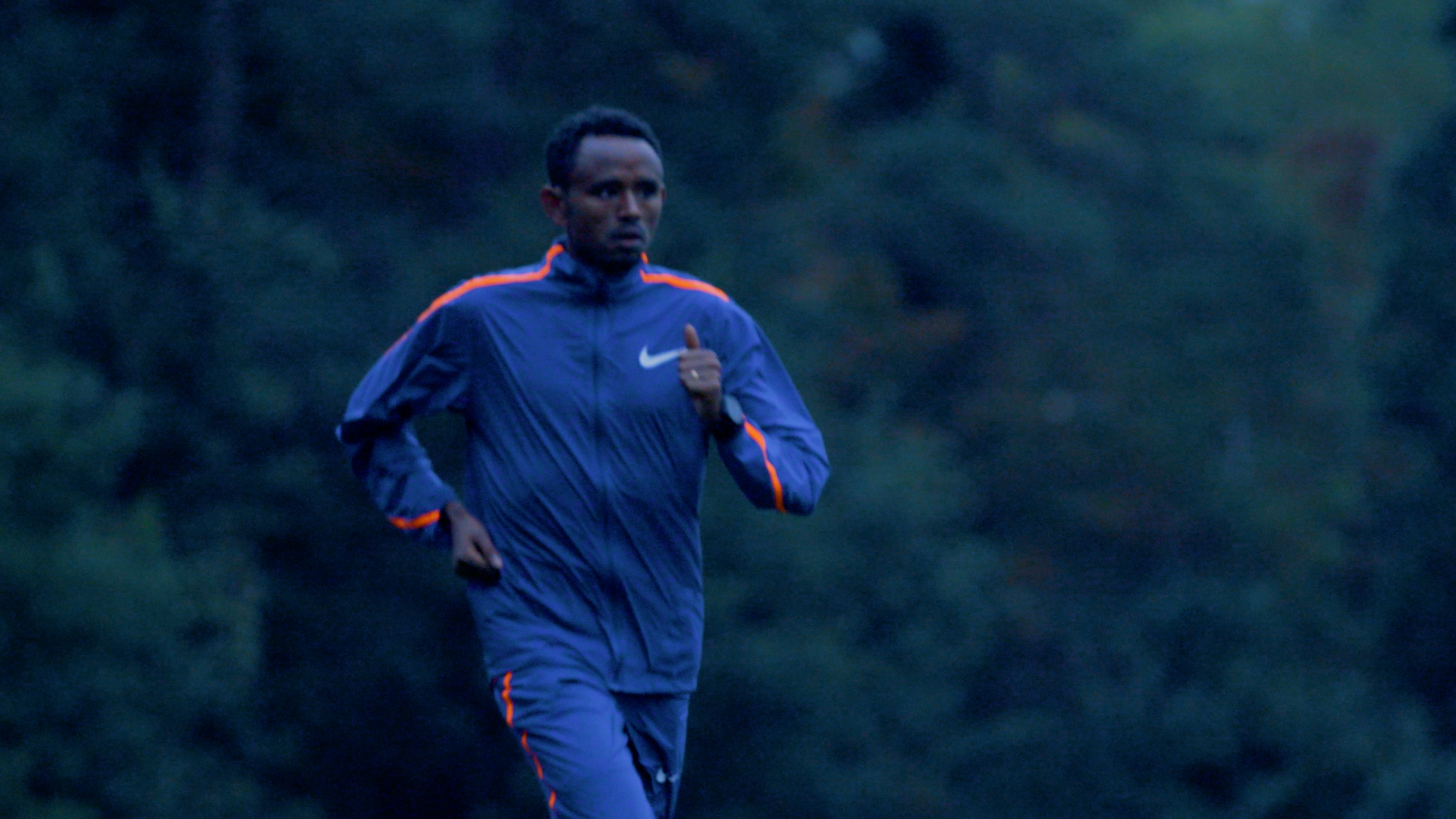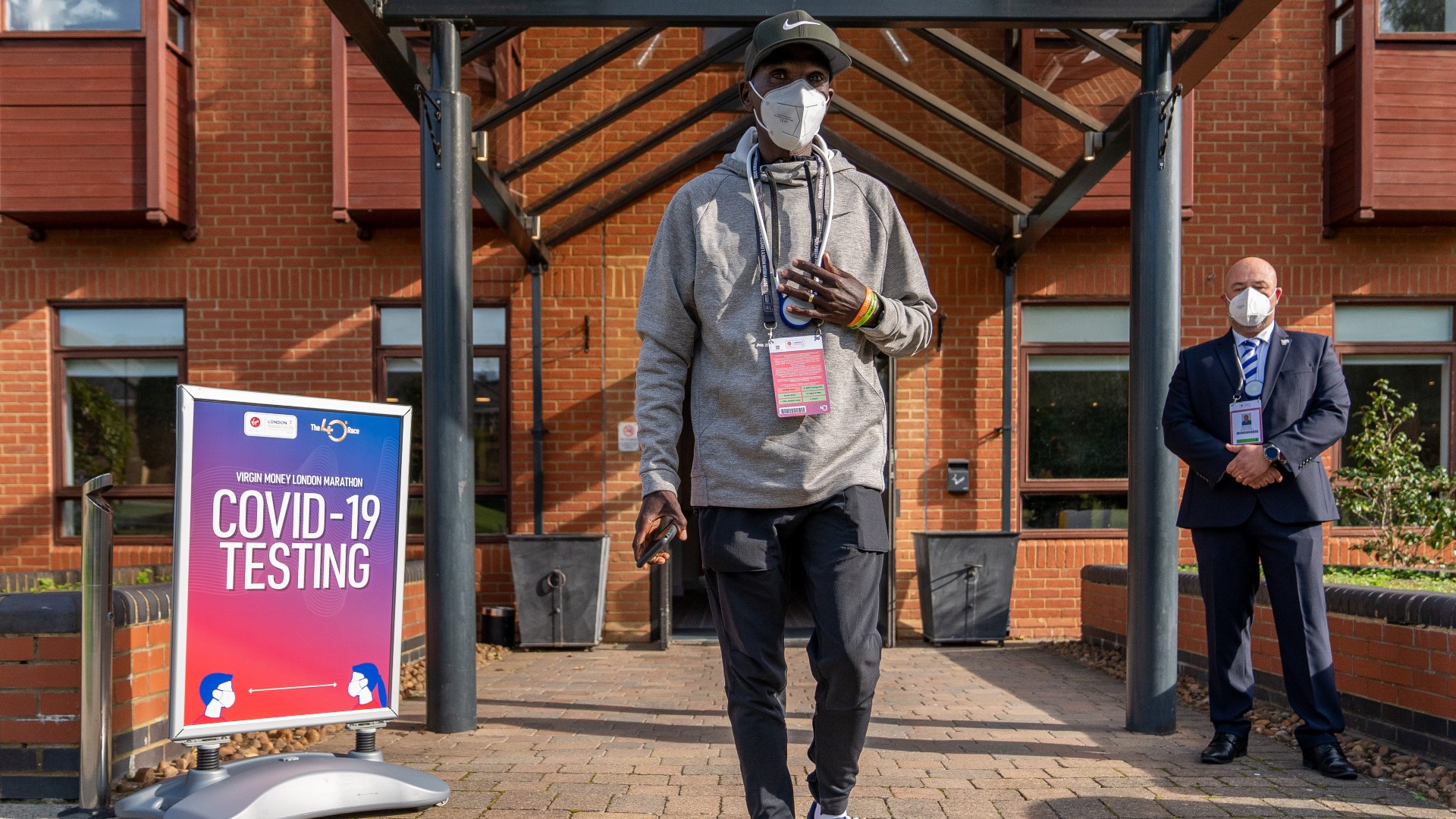02:22

This weekend London is holding the world's first international marathon in the COVID-19 era.
But in line with social distancing, there will be no cheering spectators or crowds of thousands of social runners participating in the race.
Only 100 elite athletes will take part – and even pulling off that was a challenge. They are staying in an athlete "bubble" in a London hotel near the race, its exact location being kept secret.
Modern technology is also being used to help with social distancing. Staff and athletes are wearing a device around their neck called a 'bump' which starts to flash and make a noise whenever you are within two meters of someone. It also allows event organisers to track how long you've been in close proximity with someone.

World record holder and last year's winner Eliud Kipchoge wears a face mask as he leaves the COVID-19 testing area at the official marathon hotel. /Bob Martin/AFP/London Marathon
World record holder and last year's winner Eliud Kipchoge wears a face mask as he leaves the COVID-19 testing area at the official marathon hotel. /Bob Martin/AFP/London Marathon
Around 400 staff will wear the bump during the competition. Athletes will take it off just before the race.
Marathon director Hugh Brasher says athletes have been tested in their home countries for COVID-19, and twice since they've arrived in the UK. Inside the hotel they have their owns rooms and eat meals at separate tables.
The route has also changed. Instead of running the usual circuit past London's famous landmarks, it will take place on an enclosed route, 19 times around St James' Park. The entire race is being held within a COVID-19 secure zone.
If you didn't make the list of the world's best long-distance athletes, you can still participate virtually by logging your efforts on a London Marathon app and completing your run wherever you are, as long as you walk, run or jog the 26.2 miles within 24 hours.